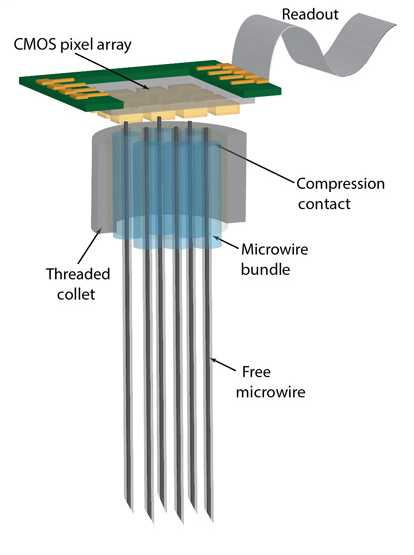BEL CMOS chip integral part of wire-bundle system for in-vivo measurements
New paper in Science Advances describing massively parallel microwire arrays for in-vivo neural recording includes CMOS high-density microelectrode-array chips developed at BEL.

New paper titled "Massively parallel microwire arrays integrated with CMOS chips for neural recording", which originated from a collaboration of BEL with groups at Stanford University (USA) and the Crick Institute (UK) was published in Science Advances (A. Obaid, M. E. Hanna, Y.-W. Wu, M. Kollo, R. Racz, M. R. Angle, J. Müller, N. Brackbill, W. Wray, F. Franke, E. J. Chichilnisky, A. Hierlemann, J. B. Ding, A. T. Schaefer, N. A. Melosh, Science Advances 2020, 6 (12), Article eaay2789). It includes a new strategy to interface silicon-based chips with three-dimensional microwire arrays, providing the link between rapidly-developing electronics and high density neural interfaces. The system consists of a bundle of microwires mated to large-scale microelectrode arrays. The system features excellent recording performance, demonstrated via single unit and local-field potential recordings in isolated retina and in the motor cortex or striatum of awake moving mice. The modular design enables a variety of microwire types and sizes to be integrated with different types of pixel arrays.
external page Science Advances is a peer-reviewed multidisciplinary open-access scientific journal, established by the American Association for the Advancement of Science (AAAS) in early 2015. The journal's scope includes all areas of science, including the life sciences, physical sciences, social sciences, computer sciences, and environmental sciences.